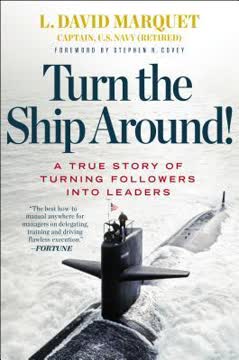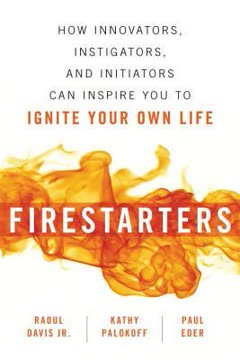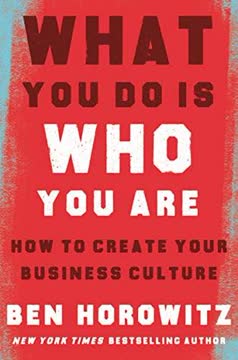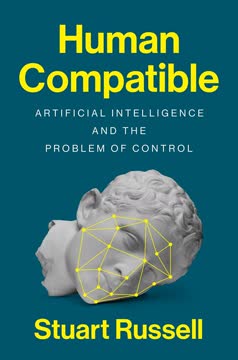重点摘要
1. 联盟:雇主与雇员关系的新框架
联盟为公司及其员工指明了前进的道路。
通过诚实建立信任。 联盟框架重新定义了现代时代的雇主与雇员关系。它承认终身雇佣已不再可行,但认识到相互信任和投资的必要性。
互惠互利。 在联盟下,双方承诺为彼此增值。公司投资于员工的长期市场价值,而员工则为公司的适应性和成功做出贡献。这创造了一个双赢的局面,双方都能繁荣发展。
团队,而非家庭。 联盟将公司重新定义为团队而非家庭。这允许更现实和富有成效的关系,成员们共同朝着特定目标努力,同时保持个人的抱负。
2. 任务轮换:围绕有限任务组织工作
任务轮换代表了雇主和雇员对特定任务的道德承诺。
三种类型的任务轮换:
- 轮换型:固定期限的标准化角色,适用于入门级或可互换职位
- 转型型:个性化的、基于任务的分配,以推动共同成长
- 基础型:对公司未来至关重要的关键员工的长期承诺
明确的任务和时间表。 任务轮换提供了明确的目标和时间框架,通常持续2-5年。这种清晰性允许双方在保持灵活性的同时投资于关系。
职业发展。 任务轮换旨在提升员工的技能和市场竞争力,即使他们最终离开公司。这种方法吸引顶尖人才,并在任务期间鼓励高绩效。
3. 建立一致性:对齐员工和公司的目标
一致性意味着管理者应明确寻求并强调公司目标和价值观与员工职业目标和价值观之间的共同点。
共同目标。 联盟框架强调在公司使命和员工职业抱负之间找到共同点。这种一致性创造了更强大、更富有成效的关系。
开放沟通。 管理者应与员工进行诚实的对话,讨论他们的目标、价值观和期望的职业轨迹。这种透明度建立了信任,并有助于定义互惠互利的任务轮换。
一致性的灵活性。 完美的一致性并非必要;目标是在特定任务轮换期间找到足够的重叠。这允许随着时间的推移改变抱负和公司需求。
4. 实施转型任务轮换:成功执行的步骤
你与员工定义的任务轮换应有明确、详细、具体的任务目标。
四个关键步骤:
- 定义公司和员工的任务和预期结果
- 设置定期检查点以反馈和评估进展
- 在当前任务结束前开始讨论下一个任务
- 协作管理意外变化
相互责任。 雇主和雇员都对任务的成功负责。定期检查确保一致性,并在需要时进行调整。
过渡计划。 无论员工是转到公司内的新任务还是离开去外部机会,适当的继任和过渡计划对于维持联盟至关重要。
5. 网络情报:利用员工网络为公司带来利益
将每个员工视为从外部世界获取数据的个人侦察员——从文章、书籍和课程中获取,但最重要的是从行业内外的其他朋友那里获取。
有价值的情报。 员工网络提供了行业趋势、竞争信息和潜在机会,这些信息可能不公开。
实施策略:
- 招募关系广泛的个人
- 教导员工如何道德地收集和分享情报
- 提供建立网络的资源(如网络基金、演讲机会)
- 创建在公司内部分享收集信息的系统
互惠互利。 鼓励网络情报有助于员工扩大其专业网络,同时为公司提供有价值的见解。
6. 企业校友网络:维持终身关系
终身雇佣可能已经结束,但终身关系仍然是理想。
校友网络的好处:
- 招聘:回聘员工和推荐的来源
- 情报:行业趋势和公司形象的见解
- 业务发展:客户推荐和品牌大使
投资水平:
- 忽视:错失潜在利益
- 支持:对校友领导的团体提供非正式援助
- 投资:正式的基础设施和系统化的福利
互惠关系。 成功的校友网络为前员工提供真正的价值,以换取他们的持续参与和支持。
7. 适应网络时代:在变化的世界中进行长期思考
没有忠诚的企业是没有长期思考的企业。没有长期思考的企业是无法投资未来的企业。
平衡灵活性和承诺。 联盟框架鼓励公司在保持当今快速变化的商业环境所需的适应性的同时,投资于员工的长期成功。
文化转变。 采用联盟思维需要改变公司和员工看待其关系的方式。它强调互惠互利、信任和持续投资于彼此的成功。
社会影响。 通过改善工作场所关系并鼓励长期思考,联盟框架有可能在个别公司之外创造积极变化,造福更广泛的经济和社会。
最后更新日期:
FAQ
What's "The Alliance: Managing Talent in the Networked Age" about?
- Overview: "The Alliance" by Reid Hoffman, Ben Casnocha, and Chris Yeh explores a new framework for employer-employee relationships in the modern, networked age.
- Core Concept: The book introduces the idea of treating employment as an alliance, where both parties make mutual promises and investments.
- Purpose: It aims to replace the outdated models of lifetime employment and free agency with a more adaptable and honest approach.
- Focus: The book emphasizes building trust, mutual investment, and long-term relationships even after employment ends.
Why should I read "The Alliance: Managing Talent in the Networked Age"?
- Modern Relevance: It addresses the challenges of managing talent in today's rapidly changing business environment.
- Practical Framework: Offers actionable strategies for building stronger, more honest relationships between employers and employees.
- Insightful Examples: Provides real-world examples from companies like LinkedIn and PayPal to illustrate its concepts.
- Career Development: Helps both managers and employees understand how to align their goals for mutual benefit.
What are the key takeaways of "The Alliance: Managing Talent in the Networked Age"?
- Alliance Framework: Employment should be viewed as a mutually beneficial alliance rather than a transactional relationship.
- Tours of Duty: Introduces the concept of "tours of duty" to structure employment relationships with clear, finite missions.
- Network Intelligence: Encourages leveraging employee networks for competitive advantage and innovation.
- Corporate Alumni Networks: Highlights the importance of maintaining relationships with former employees for ongoing mutual benefit.
How does "The Alliance" redefine the employer-employee relationship?
- Mutual Investment: Both parties invest in each other's success, with the company enhancing the employee's market value and the employee contributing to the company's growth.
- Honest Conversations: Encourages open discussions about career goals and company needs to build trust and alignment.
- Adaptability: Emphasizes the need for flexibility in roles and responsibilities to adapt to changing business landscapes.
- Long-term Relationships: Advocates for maintaining connections with employees even after they leave the company.
What is the "Tours of Duty" concept in "The Alliance"?
- Defined Missions: A "tour of duty" is a specific, finite mission that an employee undertakes within a company.
- Mutual Benefits: It aligns the employee's career goals with the company's objectives, providing clear benefits for both.
- Types of Tours: The book describes different types of tours, including Rotational, Transformational, and Foundational, each with varying levels of commitment and alignment.
- Flexibility: Tours of duty allow for adaptability and growth, enabling employees to take on new challenges and roles.
How does "The Alliance" suggest implementing network intelligence?
- Leverage Employee Networks: Encourages employees to use their personal and professional networks to gather valuable information and insights.
- Encourage External Engagement: Supports activities like attending conferences and networking events to expand knowledge and connections.
- Structured Sharing: Establishes processes for employees to share what they learn with the company, enhancing collective intelligence.
- Cultural Shift: Promotes a culture where networking is seen as a valuable asset rather than a distraction.
What role do corporate alumni networks play in "The Alliance"?
- Lifelong Relationships: Alumni networks maintain connections with former employees, extending the alliance beyond active employment.
- Mutual Benefits: Alumni can provide referrals, insights, and even return to the company, benefiting both parties.
- Investment Levels: The book outlines different levels of investment in alumni networks, from basic support to comprehensive engagement.
- Brand Ambassadors: Alumni can enhance the company's brand and reputation through their ongoing success and advocacy.
How does "The Alliance" address the challenges of modern employment?
- Trust and Loyalty: Aims to rebuild trust and loyalty in an era where traditional employment models have broken down.
- Adaptability: Provides a framework for companies to remain adaptable and innovative in a fast-paced environment.
- Employee Engagement: Focuses on engaging employees by aligning their personal goals with the company's mission.
- Long-term Thinking: Encourages companies to invest in their employees' futures, fostering a culture of long-term growth and success.
What are some practical strategies from "The Alliance" for managers?
- Define Clear Missions: Use tours of duty to set clear, achievable goals for employees that align with company objectives.
- Foster Open Communication: Encourage honest conversations about career aspirations and company needs to build trust.
- Support Networking: Provide resources and opportunities for employees to expand their networks and bring back valuable insights.
- Maintain Alumni Connections: Develop and invest in corporate alumni networks to leverage former employees' expertise and influence.
What are the best quotes from "The Alliance" and what do they mean?
- "Help make our company more valuable, and we’ll make you more valuable." This quote encapsulates the mutual investment philosophy of the alliance framework.
- "We’re a team, not a family." Emphasizes the importance of treating employment as a professional relationship with clear goals and expectations.
- "A business without loyalty is a business without long-term thinking." Highlights the need for trust and loyalty to drive sustainable success.
- "The alliance makes employees more valuable by making them more adaptive and skillful." Underlines the focus on employee development and adaptability.
How can "The Alliance" help employees advance their careers?
- Career Transformation: Tours of duty provide structured opportunities for employees to gain new skills and experiences.
- Networking Opportunities: Encourages building and leveraging professional networks for career growth and development.
- Alignment with Goals: Helps employees align their personal aspirations with their roles, leading to more fulfilling work.
- Ongoing Relationships: Maintains connections with former employers through alumni networks, offering continued support and opportunities.
How does "The Alliance" apply to different industries and roles?
- Universal Principles: The alliance framework is adaptable to various industries and roles, focusing on mutual benefit and adaptability.
- Customizable Tours: Tours of duty can be tailored to fit the specific needs and goals of different sectors and job functions.
- Scalable Strategies: The book provides scalable strategies for companies of all sizes, from start-ups to large corporations.
- Industry Examples: Offers examples from diverse industries, including tech, consulting, and manufacturing, to illustrate its concepts.
评论
《联盟》获得了褒贬不一的评价,有人称赞其对现代雇佣关系的新颖视角和对管理者的实用策略。读者们欣赏“任务期”这一概念以及对雇主和雇员之间互惠互利的强调。一些人批评该书过于关注LinkedIn和硅谷的例子,而另一些人则认为内容重复。总体而言,评论者认为这是一本快速且有见地的读物,提供了适应21世纪工作性质变化的宝贵理念。
Similar Books



















